
The Project
This project was based on my research of the use of algorithms, especially their adaptation in the field of art and design. I experienced an increase of systematized designs which raised the question about the influence on the work of designers and the role and task artists will have in the future. An algorithm that has been taught not only the technical requirements but also the basic rules of human perception of aesthetics can create artwork faster, more specific, and in almost infinite variation than any of its human colleagues. Without getting noticed by the common eye.
I firmly believe that the value of art comes primarily from true inspiration and is defined by meaning and concept. Therefore, technology can only ever be a tool but never an end in itself.
Background
The goal of the project was always a visual result. I decided to limit myself to a very small section of the “complex systems” and dig depper step by step: the “cellular automata” (hereafter: CA).
S. Wolfram (2002) showed in his book “A new Kind of Science” that CA are not only relevant for the study of many branches of science but also already the very interesting graphical component that these systems hold.
Notice
This is a living project I am still working on. However, all results will be published here.
Cellular Automata
To start, you take advantage of one of the simplest elements, a bit. This is called cell and its value (0 or 1) as status. The use of such simple elements is quite sufficient, because it allows to show and better understand the details behind complex systems.
In the next step, this principle becomes a system. Several of these cells (grid) react with their adjacent cells (neighbors) according to certain rules, changing their value (status) over time.
Depending on the underlying rules, there are a variety of systems here, all of which produce different visual results. The Game of Life system, which I found most exciting, is based on just three simple rules:


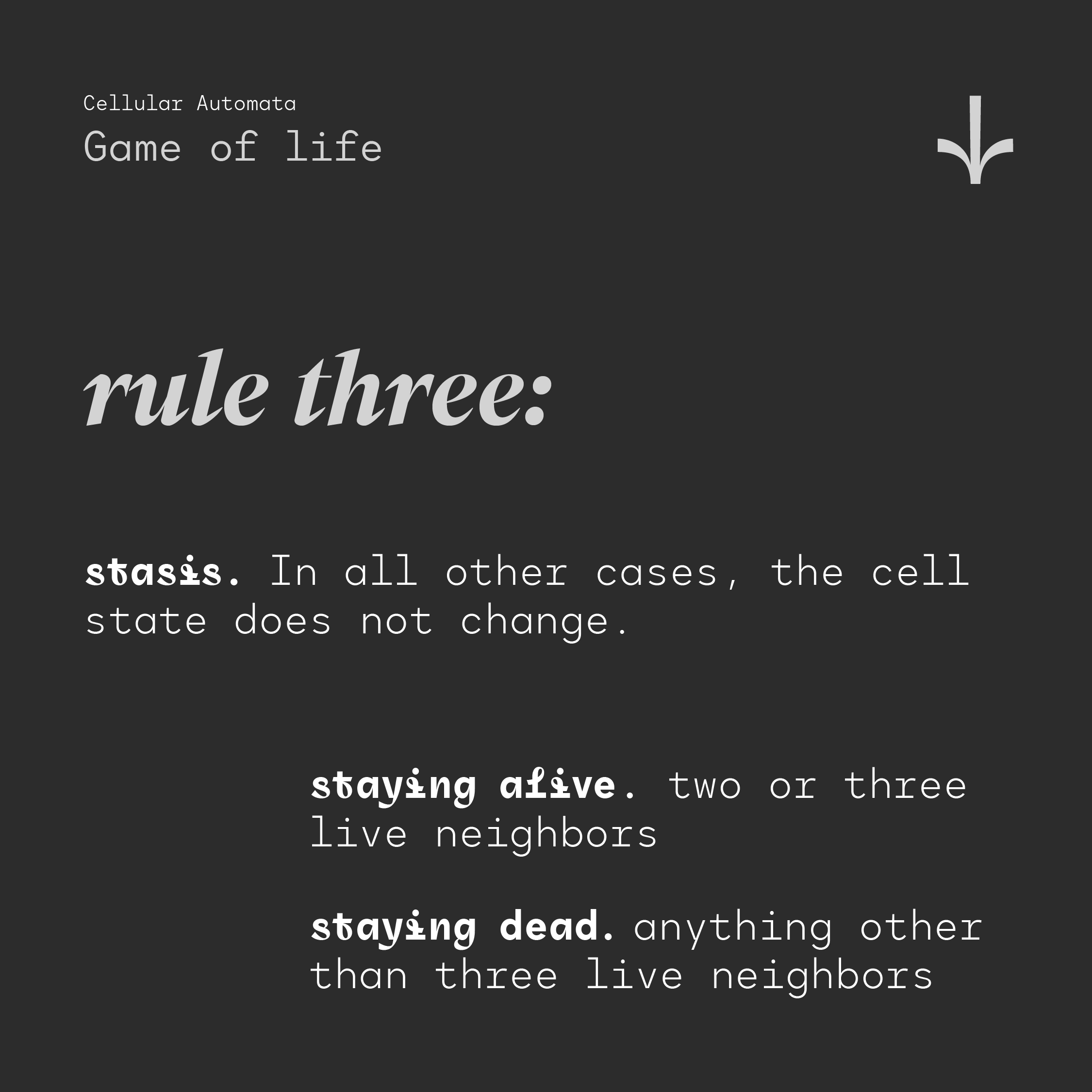
1. Birth: When a cell is dead, it will come to life if it has exactly three living neighbors.
2.Death: If a cell is alive (status is 1) it will die (status becomes 0) if the following circumstances occur:
Overpopulation: If the cell has four or more direct neighbors who are alive, it dies.
Loneliness: If the cell has only one or fewer living neighbors, it dies.
3.stasis: In all other cases, the status of the cell does not change.
Stay alive: If a cell is alive and has exactly two or three living neighbors, it stays alive.
Stay dead: If a cell is dead and does not have exactly three living neighbors, it remains dead.


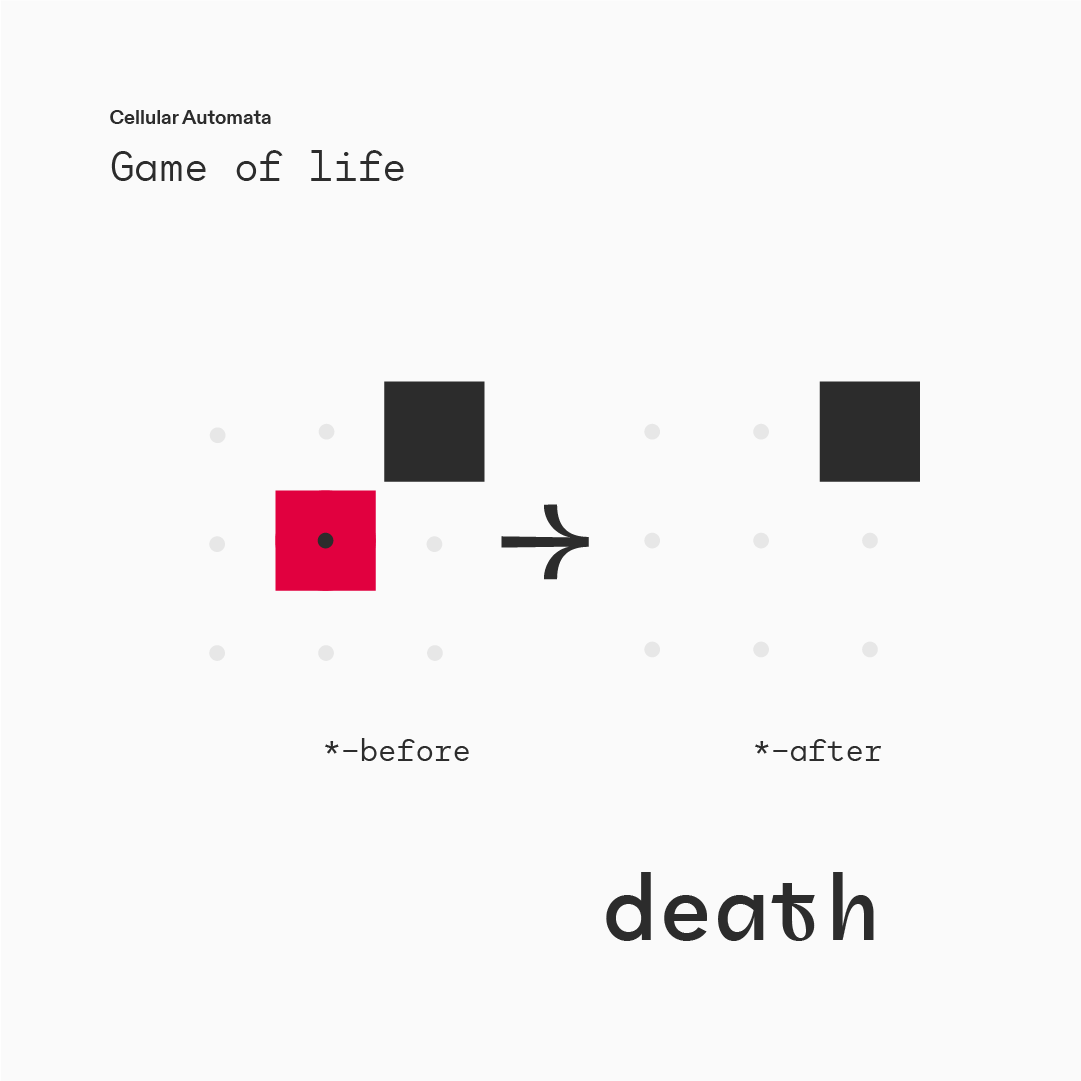
Each life cycle is called a generation. Unlike other CA systems where generational changes dominate the visual aesthetics at each step, the beauty of the Game of life lies in its unpredictability over time. There are initial patterns that produce intriguing results. For example, some compounds of cells remain static and do not change – at least not without external influences. Others oscillate between two states. Still others “move” across the grid.


These include the “block”, the “hive”, the “loaf” and the “boat” (the names arise from their visual similarity). Then there are patterns that oscillate between two states: These include the “blinker,” the “toad,” and the “beacon.” In addition, patterns develop that move across the grid from generation to generation – why they are called the “glider” and the “light spaceship”.

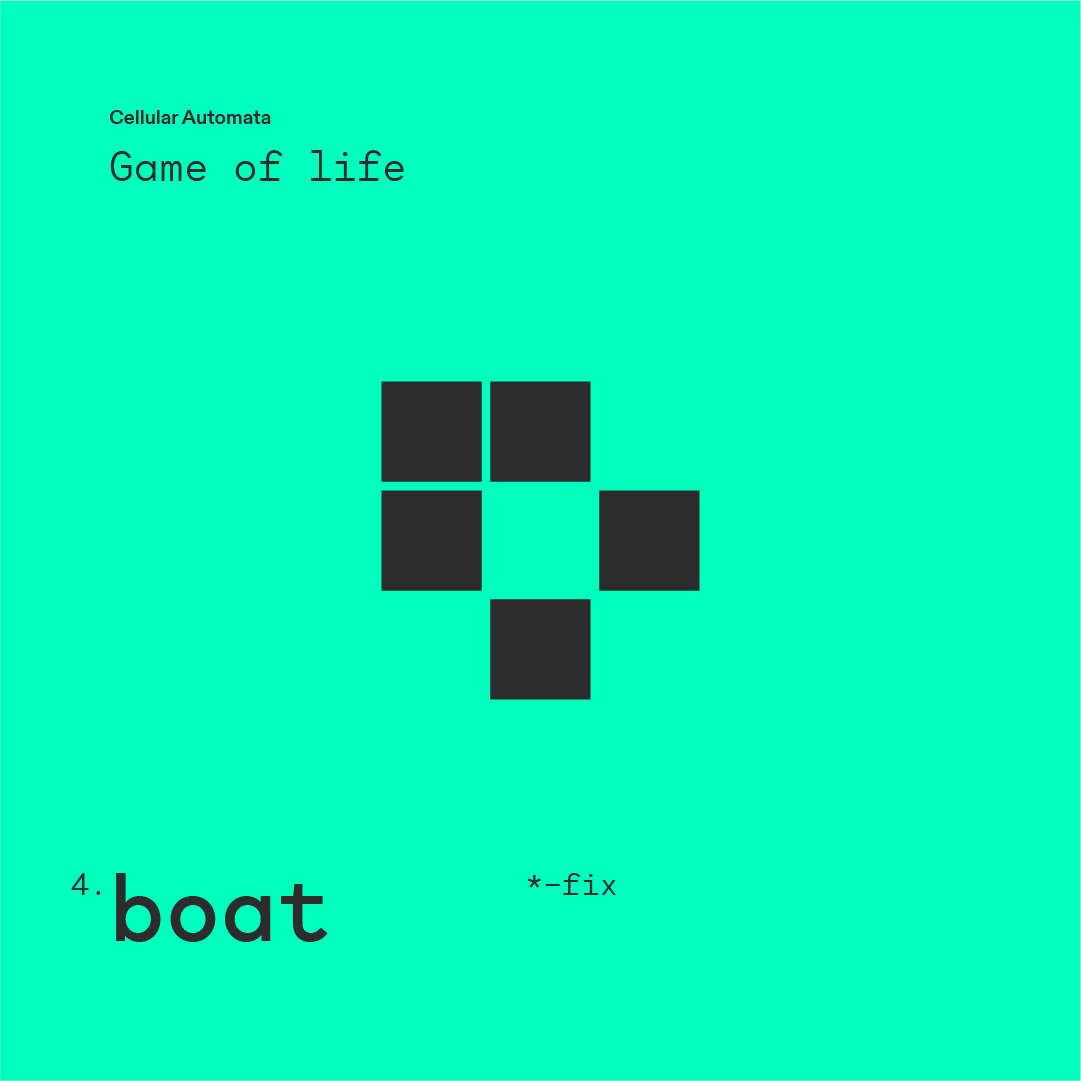

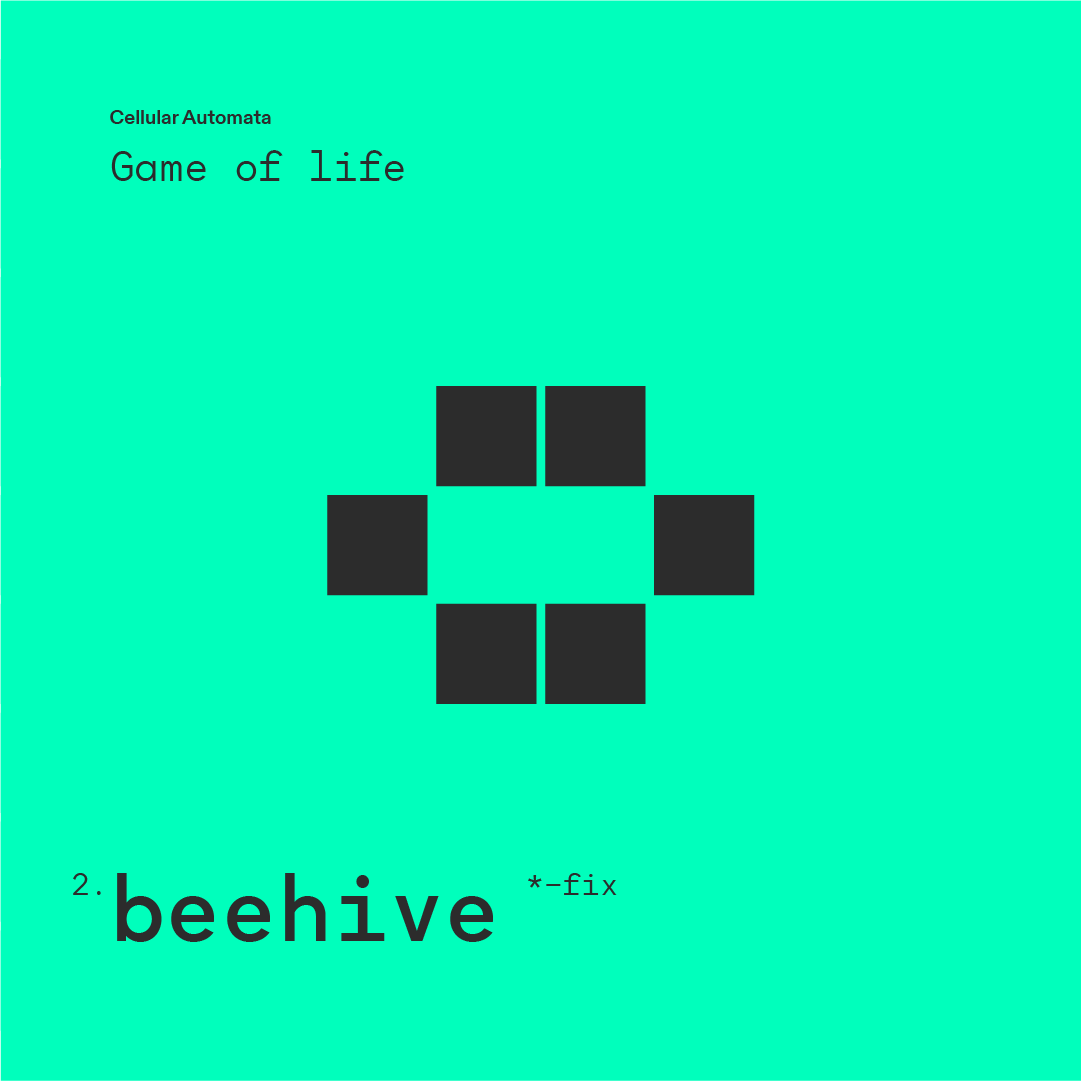
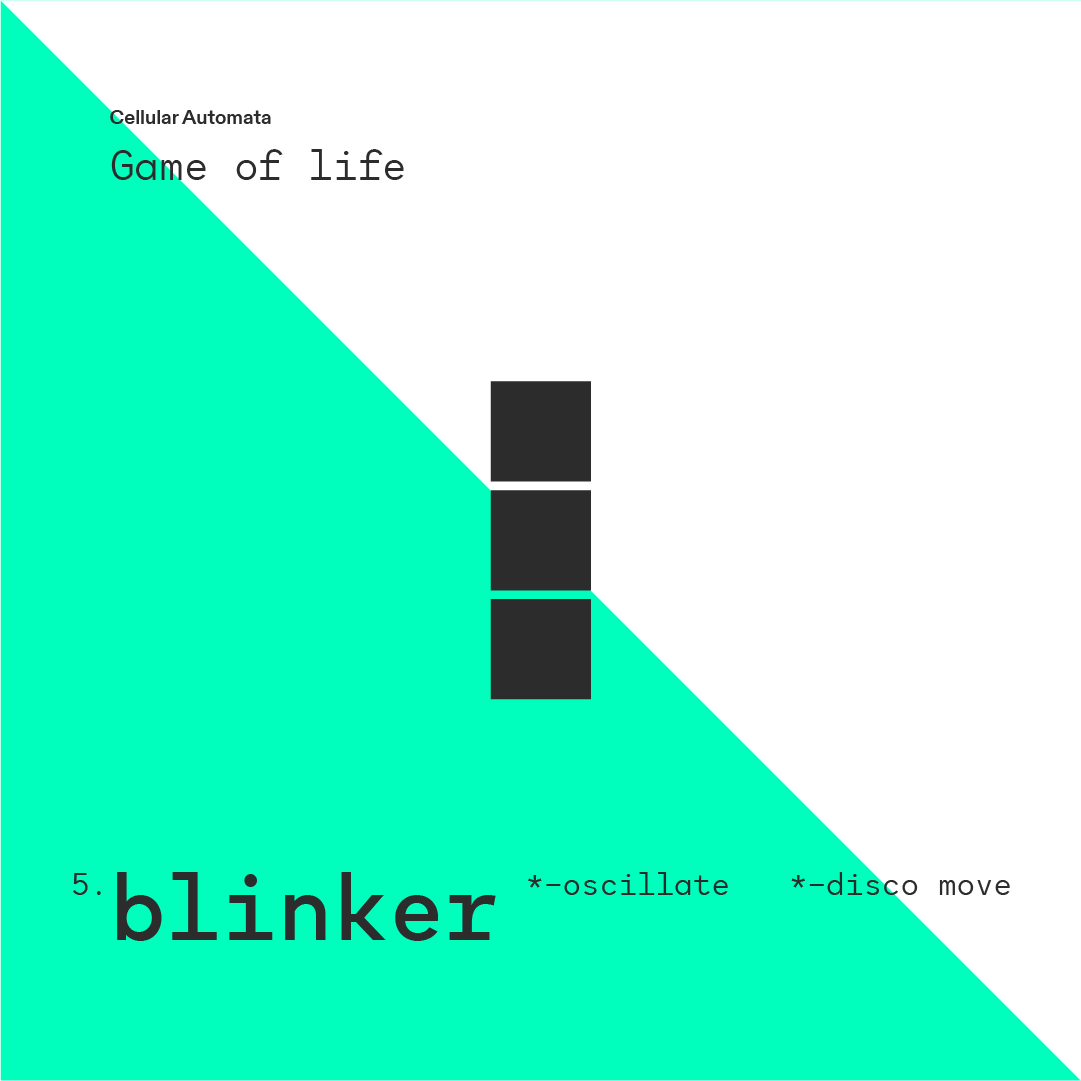

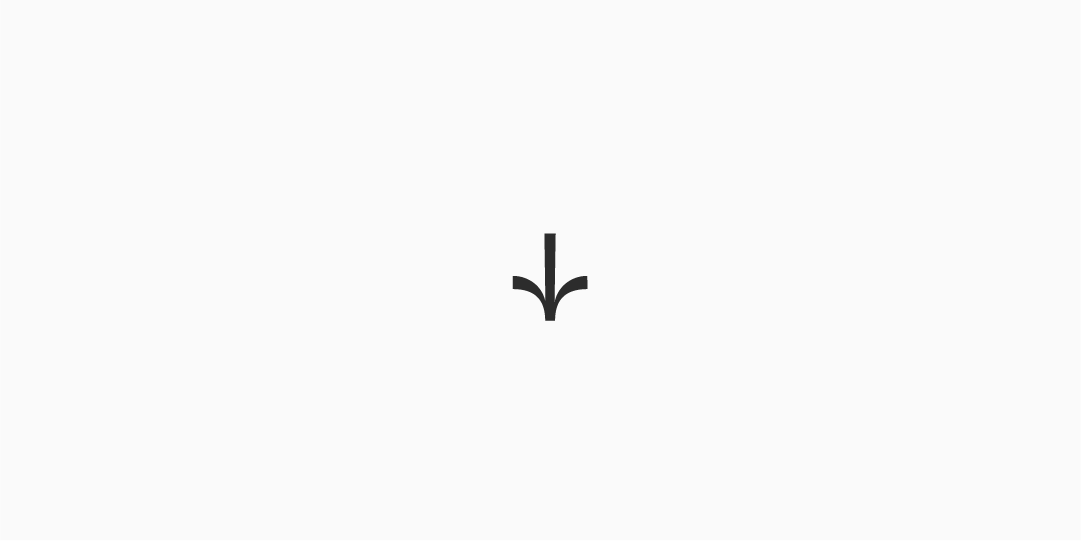





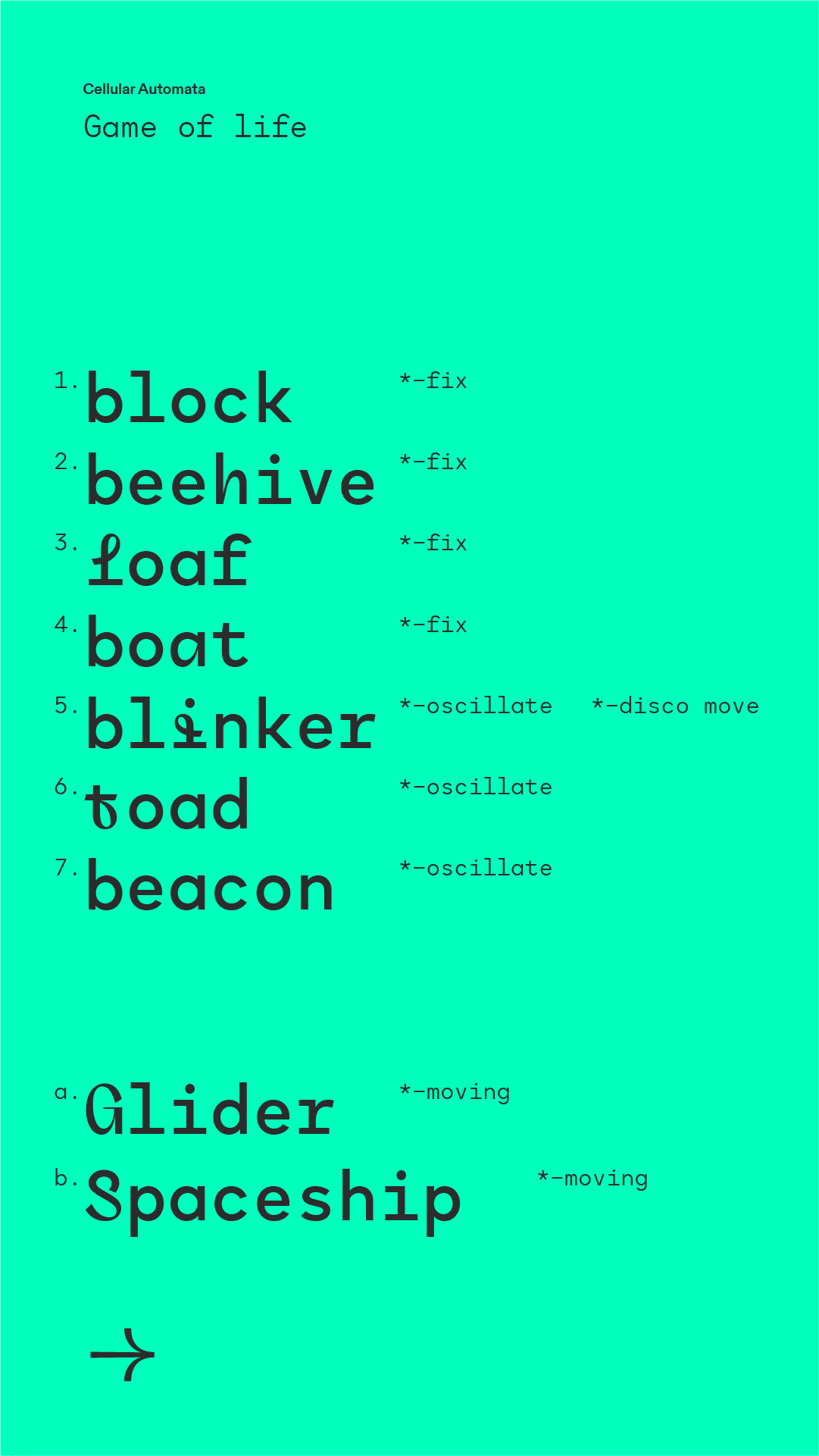




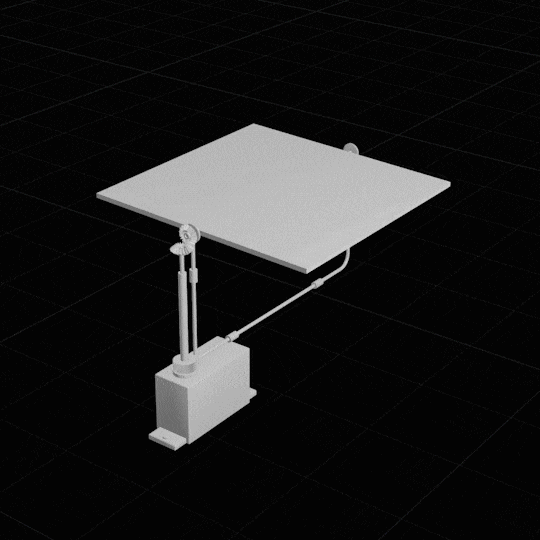

I’ve set up the underlying grid scalable. The smallest grid consists of 3×3 cells, the largest has only technical limits. This is interesting, as a small section allows for more detailed insights – but ends very quickly due to the lack of external influences (the system comes to an end and remains in the patterns described). But zoomed out, the individual elements blur increasingly into a large entity, resulting in an unpredictable and almost infinite “noise” of living, moving, oscillating and dying cells.
The last important point, was to eliminate the boundaries: If not further considered, the system also dries up due to the natural limits imposed by the grid.
Visuals
After getting the Game of life up and running I developed a visual style to showcase the results of the system in different graphical entities like seen here. I am still experimenting with the system and extending it to explore new graphical components. All results will be published here.

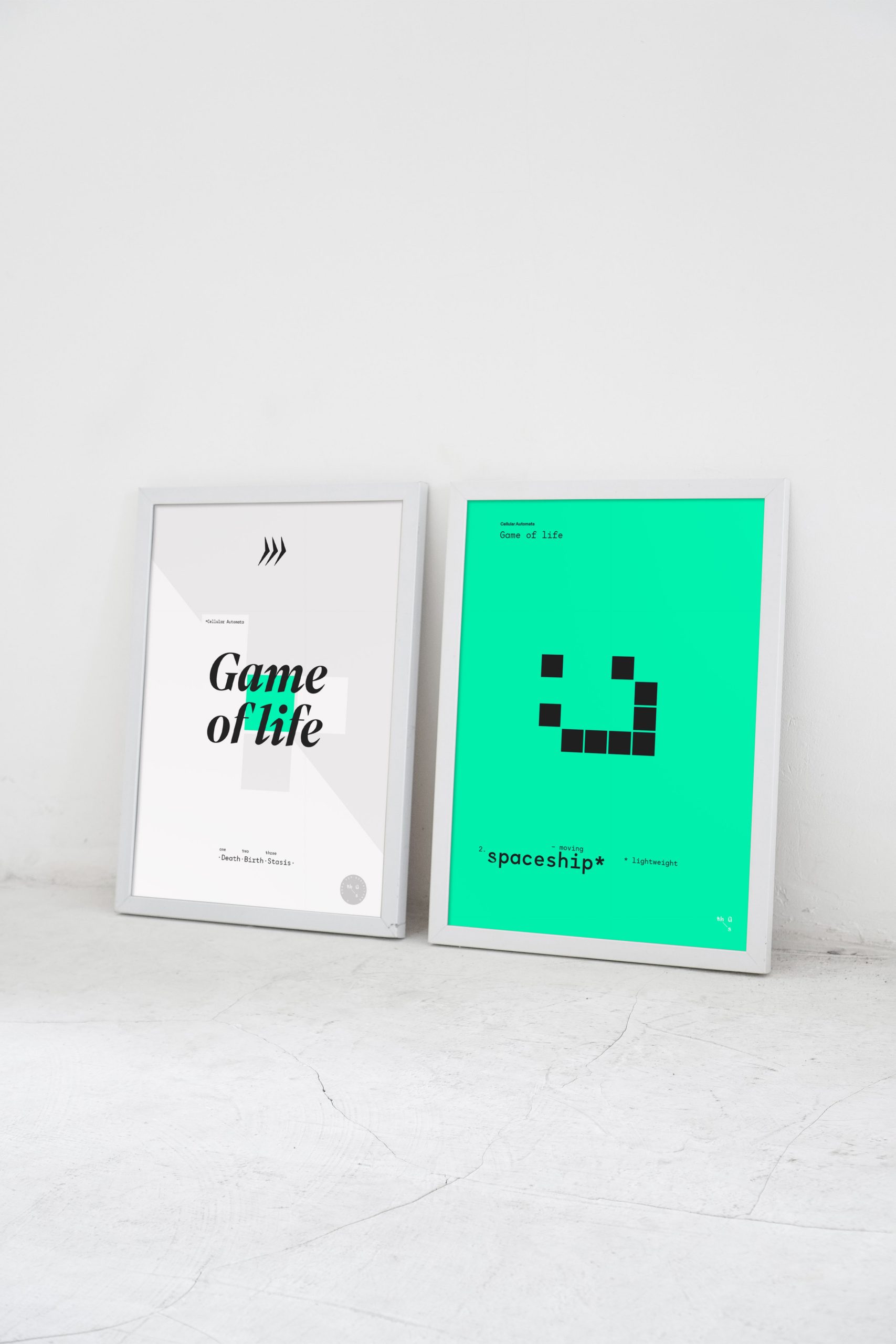



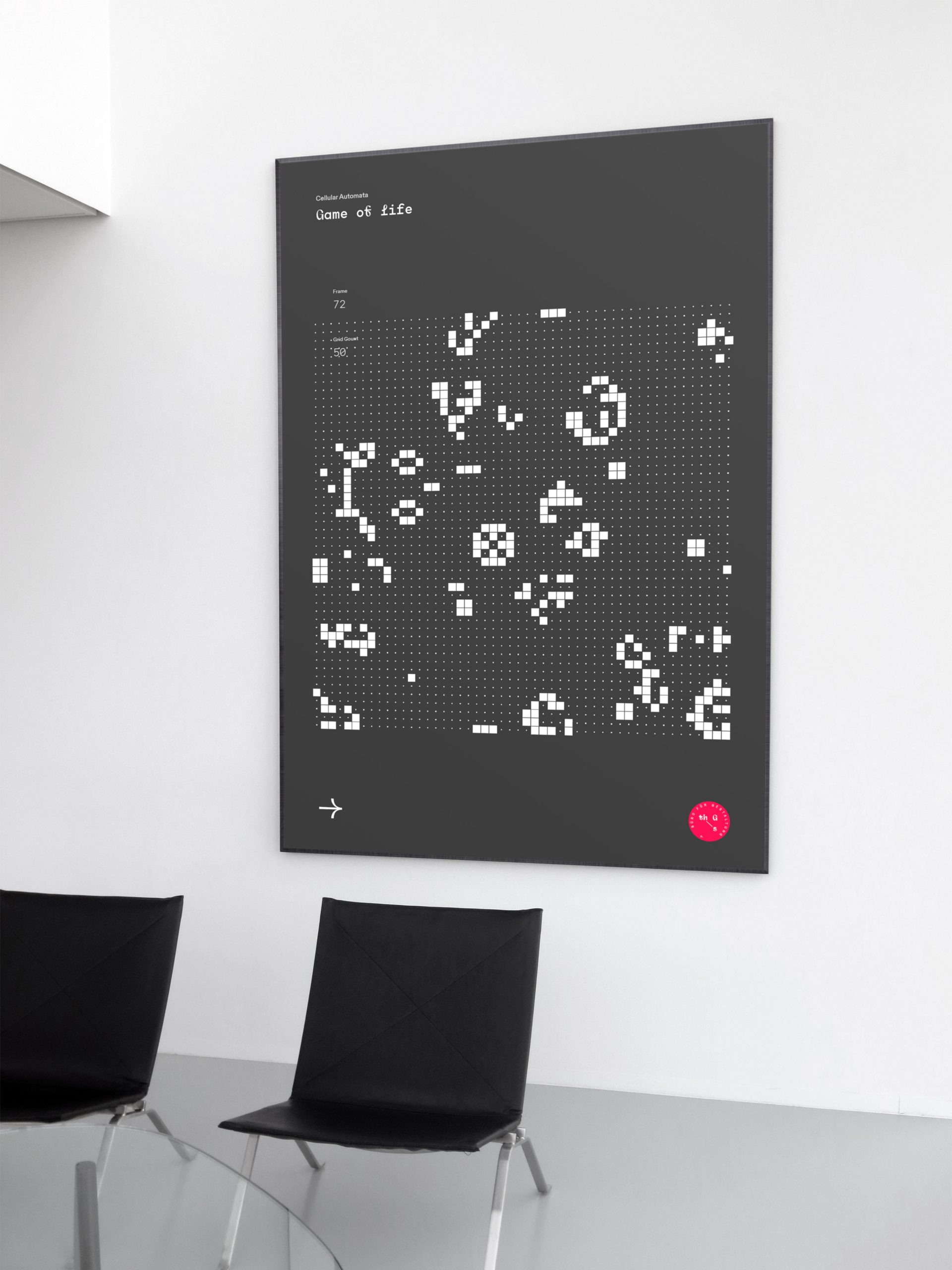

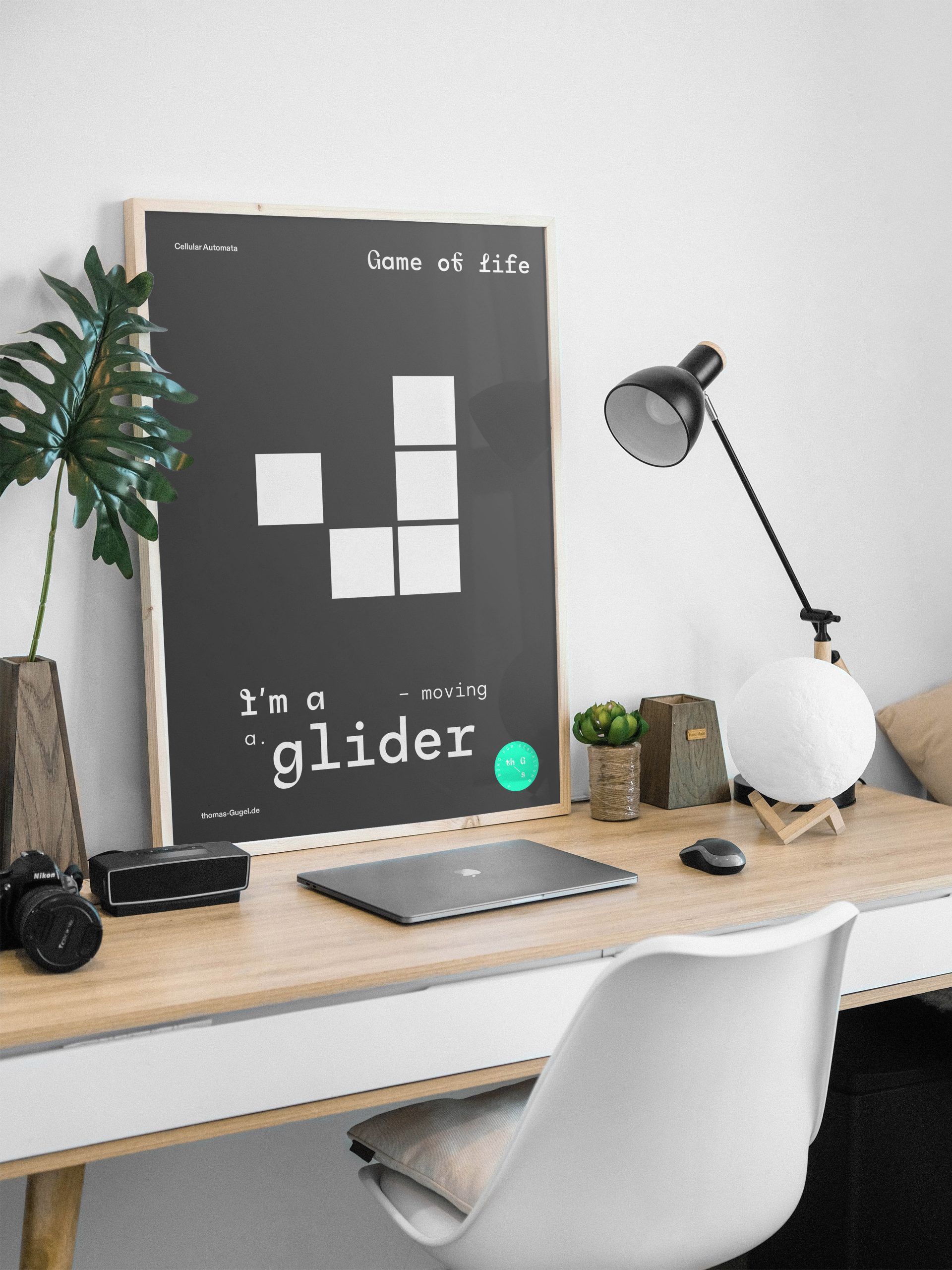
Notice
This is a living project I am still working on. However, all results will be published here.
Supported by:
Ministry of Culture and Science Nordrhein-Westfalen
Creative Direction: Thomas Gugel
Learning Resource & Inspiration:
Daniel Shiffman and his book “The nature of code”
Research
Concept
Scripting (Houdini Vex)
Design
Art-Direction
Report
Scholarship: October 2020 – July 2021



